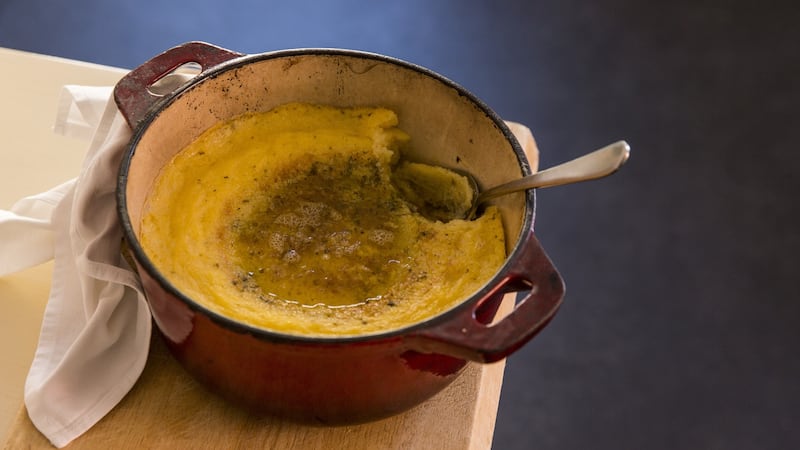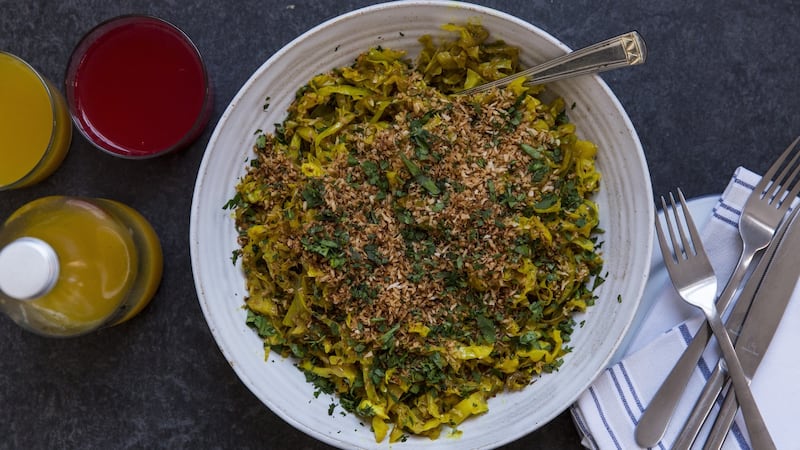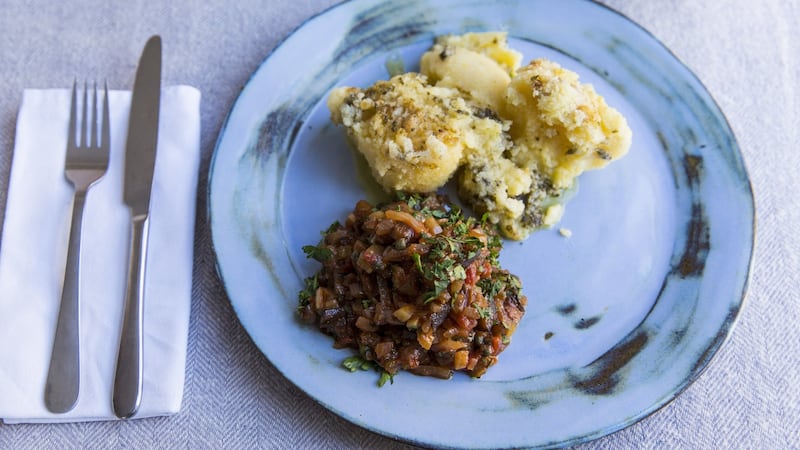Next Thursday is Thanksgiving, and I’ve always loved the idea of a time to focus our appreciation on food as a daily celebration.
Thanksgiving originated in 1621 at the Plymouth plantation when religious refugees from England, the Pilgrims, invited the local Americans to a harvest feast. The previous year saw the Pilgrims suffer heavy losses when their harvest failed. Following this, the locals shared their growing method, known as the three sisters, with the Pilgrims. The pilgrims then had a fruitful harvest and, in return, wanted to give thanks back to the locals for their help.
I love this story as a reminder of how blessed we are when we have an abundance of food, choice and freshness available to us every day. It’s also a reminder that it’s important for us to share our growing and cooking skills with each other as these are skills that have been passed down through the generations and are important for our survival.
Saying grace before and after meals is a lost tradition but that does not mean we cannot show grace. This can be done simply by saying “thank you” before we start to eat, thanking the person who made the meal, thanking the others who have joined us at the table. After all, sharing a meal with others is the best gift there is, eating slowly and taking time to appreciate what we have on our plates and the company we find ourselves in. Having this focus keeps us grounded and grateful for the abundance we have, which has become all too easy to forget in our busy lives. We must remember that food, while functional, is a luxury that not everyone is afforded.
Within the cookery school, one of the many joys I get from taking my students to visit our local producers and growers is hearing them express their new understanding for the work that goes getting our food to our shops and markets. As a parent, cook and teacher, there isn’t a day that goes by when I do not mention food waste. Why would we throw out food that is still good to eat at another meal, put in the freezer for a later date or simply send as a gift to a friend or neighbour?
The true joy of food is using the best ingredients we can, enjoying the preparation, sharing a meal with our loved ones, taking time to be thankful and using this time to be present and aware of our fortune.
Oven-baked seaweed polenta

This dish is a simple and healthy way to make polenta. It takes a few minutes to pull together and will cook away in the oven while you get other things done. Polenta becomes solid as it cools, so acts well as a leftover. Simply cut into cubes and fry it up to go with eggs for breakfast or to be added to a salad for lunch. Often I find myself doubling this recipe so I can have some to go with another dish during the week.
Ingredients:
- 1 cup polenta
- 5 cups water
- 2oz butter
- Butter for greasing
- Salt
- Mixed seaweed salad
- Parmesan or aged Coolea
Method: Preheat the oven to 180ºC. Generously rub the inside of an deep oven-proof casserole with butter. Add the polenta, water, butter, seaweed and salt and mix well. Place the casserole in the preheated oven. Bake, uncovered, for an hour or until the polenta is soft and wobbly. Spoon out and serve with grated Parmesan or aged Coolea.
Mustard-braised spiced cabbage

Cabbage is the best vegetable there is and I am so delighted it’s back in fashion. I can eat it and very often do, every day of the week to raised eyes from my daughters. I like to remind them, when they do this, of its high sulphur content which will benefit their adolescent skin and my ageing skin. I am very happy to eat this with a bowl of sticky rice but it works so well with pork and roast chicken.
Ingredients:
- 1 tbsp of your favourite oil
- 1½ tbsp mustard seeds
- 4 curry leaves
- 2 onions, halved and very thinly sliced
- 1 dried red chilli, soaked in boiling water until soft
- 1 tbsp turmeric
- 500g green or white cabbage, very finely shredded
- 100ml water
- Salt
- Toasted dried coconut to garnish (optional)
Method: Heat the oil in a large frying pan over a medium heat. Add the mustard seeds and when they start to pop add the curry leaves. Stir-fry for two-three minutes. Stir in the onions and red chilli. Cook over a high heat, stirring often, for four-five minutes or until the onions soften. Add the turmeric and the cabbage, stir and cook for two-three minutes.
Add the water, cover and cook gently for five-seven minutes or until the cabbage has softened, but still retains a bite. Season and serve sprinkled with the coconut.
Caponata (Sicilian sweet-and-sour aubergine)

I have been cooking this classic dish for many years. It has many uses in my kitchen – from being part of our mezze plate to being served warm with oven-baked polenta, chicken or lamb.
Ingredients:
- 1 large aubergine, diced
- 6 tbsp olive oil
- 6 sticks of celery, chopped
- 1 onion, chopped
- 1 x 400g tin chopped tomatoes
- 2 tbsp sugar
- 4 tbsp vinegar
- 1 tsp nutmeg, grated
- 1 tsp capers
- 12 olives, pitted and roughly chopped (optional)
- Salt and pepper
Method: Heat the olive oil in a heavy- based frying-pan. Saute the celery for a few minutes until it starts to soften and is lightly browned. Scoop out and set aside. Fry the aubergine in the same oil until browned and tender, adding a little extra oil if necessary. Scoop out and leave to cool.
Add the remaining oil to the pan and saute the onion until softened. Add the tomatoes and simmer for 15 minutes until thick. Next add the sugar, vinegar and nutmeg and cook for a further 10 minutes, until you have a rich sweet-and-sour sauce. Add a little salt and plenty of pepper. Stir in the capers, olives, aubergine and celery. Taste and adjust the seasoning.
Finally, add the chopped parsley if you are serving it hot. When I am serving it cold, I like to wait for it to cool fully before adding the parsley so I am retaining its freshness.

















